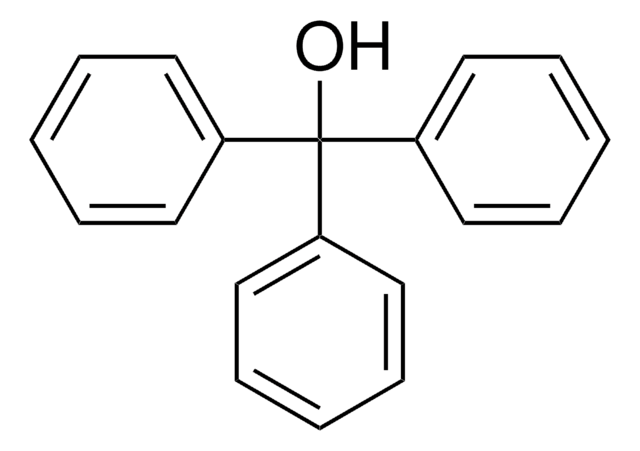650609
Metanol
≥99.9%, HPLC Plus, suitable for HPLC, poly-coated bottles
Sinónimos:
Alcohol metílico
About This Item
Productos recomendados
product name
Metanol, HPLC Plus, ≥99.9%, poly-coated bottles
grade
HPLC Plus
Quality Level
vapor density
1.11 (vs air)
vapor pressure
410 mmHg ( 50 °C)
97.68 mmHg ( 20 °C)
assay
≥99.9%
form
liquid
autoignition temp.
725 °F
expl. lim.
36 %
technique(s)
HPLC: suitable
impurities
≤0.0002 meq/g Titr. base
≤0.0003 meq/g Titr. acid
≤0.001% Carbonyl Compounds
≤1.0 ppb Fluorescence (quinine) at 254 nm
≤1.0 ppb Fluorescence (quinine) at 365 nm
<0.05% water
evapn. residue
≤0.0001%
color
APHA: ≤10
refractive index
n20/D 1.329 (lit.)
bp
64.7 °C (lit.)
mp
−98 °C (lit.)
solubility
benzene: miscible(lit.)
ethanol: miscible(lit.)
water: miscible(lit.)
density
0.791 g/mL at 25 °C (lit.)
0.791 g/mL at 25 °C
HPLC-gradient
≤2 mAU at 230 nm
≤5 mAU at 254 nm
λ
H2O reference
UV absorption
λ: 205 nm Amax: 1.0
λ: 210 nm Amax: 0.80
λ: 220 nm Amax: 0.20
λ: 230 nm Amax: 0.10
λ: 250 nm Amax: 0.02
λ: 400 nm Amax: 0.005
format
neat
SMILES string
CO
InChI
1S/CH4O/c1-2/h2H,1H3
InChI key
OKKJLVBELUTLKV-UHFFFAOYSA-N
¿Está buscando productos similares? Visita Guía de comparación de productos
General description
Application
- Colony forming unit-fibroblast assay of bone marrow mononuclear cells.
- As solvent for the preparation of extracts of hyphae of Aspergillus for the estimation of gliotoxin by reversed phase-HPLC.
- Immunofluorescence studies.
- To compose eluent for the ion-pair reverse-phase HPLC isolation of nucleotides and their decomposition products.
- As eluent in the HPLC estimation of malondialdehyde in plasma, which is an indicator of oxidative stress.
Preparation Note
signalword
Danger
Hazard Classifications
Acute Tox. 3 Dermal - Acute Tox. 3 Inhalation - Acute Tox. 3 Oral - Flam. Liq. 2 - STOT SE 1
target_organs
Eyes,Central nervous system
Storage Class
3 - Flammable liquids
wgk_germany
WGK 2
flash_point_f
49.5 °F - closed cup
flash_point_c
9.7 °C - closed cup
ppe
Eyeshields, Faceshields, Gloves
Elija entre una de las versiones más recientes:
¿Ya tiene este producto?
Encuentre la documentación para los productos que ha comprado recientemente en la Biblioteca de documentos.
Los clientes también vieron
Nuestro equipo de científicos tiene experiencia en todas las áreas de investigación: Ciencias de la vida, Ciencia de los materiales, Síntesis química, Cromatografía, Analítica y muchas otras.
Póngase en contacto con el Servicio técnico





